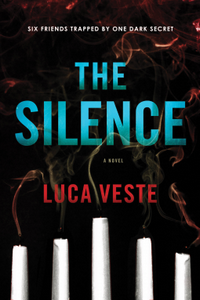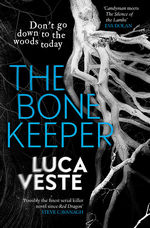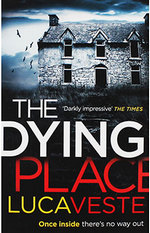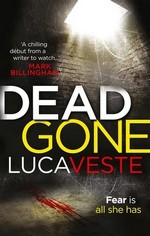 |
The Silenceby Luca Veste eARC, 400 pg. Read: July 17-20, 2020 |

This is one of those thrillers where it feels like if you say anything, you’ll ruin something. But, I’ve got to try (if only for the sake of my NetGally Feedback Ratio).
What’s The Silence About?
I’m going to borrow the blurb, because if that says too much, it’s on Sourcebooks, not me.
It was supposed to be our last weekend away as friends, before marriage and respectability beckoned. But what happened that Saturday changed everything.
We killed a stranger and covered it up.
In the middle of the night, someone died.
We didn’t know our victim was a serial killer.
The six of us promised each other we would not tell anyone about the body we buried.
But now the pact has been broken.
We don’t think he was working alone.
And the killing has started again …
The year following the killing of the serial killer was not easy on these six friends, the toll on them all is great. Then when the killing starts again, it’s even worse, the fragile hold that Matt (the narrator) has on his life and mental health is about to shatter. Sone of his friends are doing somewhat better, while others…well, you should read that for yourself.
While we what happens to these six around the one-year anniversary we get some quick glimpses at some of the formative experiences they shared through childhood, adolescence, and university that shaped who they are and how they reacted to the present crisis.
What can I talk about?
That borders on too much about the plot, and I really don’t think I can talk much about the characters for the same reason—almost everything we learn about them is tied to the story.
Let’s focus instead on the feel of the book, the atmosphere. Wow. The opening pages are upbeat, joyful—but you can tell that won’t last for long (and not just because you’ve read the blurb). Then it gets bad, and worse, and worse yet. And you can’t look away—like the proverbial car wreck you see coming. Not only can you not look away, you have to see more, you have to keep turning the pages to see just what kind of damage will be done. How these lives will be further shattered.
It’s horrible. It’s tragic. It’s compelling.
So, what did I think about The Silence?
I don’t know that I can honestly say that I enjoyed this book—I don’t think anyone can. It’s not that kind of book. It’s a serial killer novel like you’ve never read before. If for no other reason than the focus isn’t on the killer or the hunt for the killer. It’s about the victims, prospective victims, and those that are left behind. It’s about seeing the ripple effects of trauma.
It’s a great experience. An intense read. This will be lurking in my subconscious for a while. Veste tapped into something here, and you’ve gotta try it.
Disclaimer: I received this eARC from Sourcebooks Landmark via NetGalley in exchange for this post—thanks to both for this.

This post contains an affiliate link. If you purchase from it, I will get a small commission at no additional cost to you. As always, opinions are my own.
![]()






